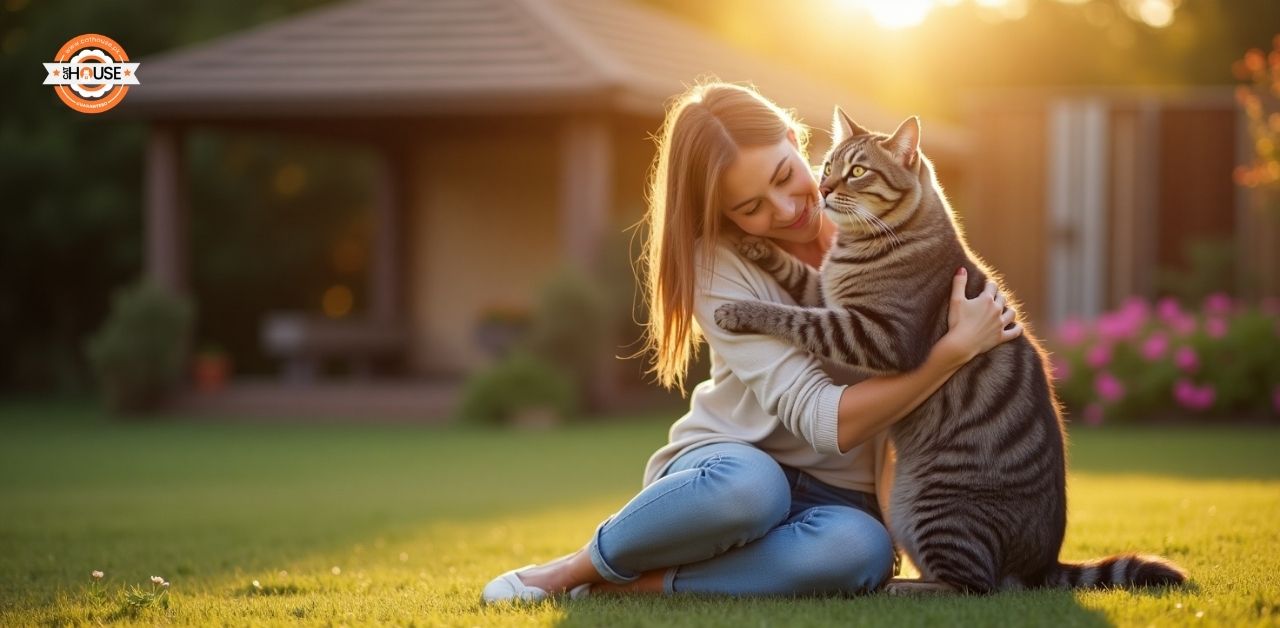How to Teach Your Cat to Hug and Kiss Tricks

Teaching your cat to hug and kiss isn’t about forcing tricks. It’s about building a deep, trusting bond. Every cat is different, and like people, some are more affectionate than others. Before you even try to teach any commands, make sure your cat feels safe in your home and trusts you fully.
Cats show affection in many subtle ways. You may have noticed your cat blinking slowly or rubbing their cheek against you. These are signs that your cat feels comfortable and is beginning to see you as a friend. Some cats may start bunting—rubbing or butting their head against your hand. That’s their way of saying, “You’re my person.”
When I first adopted my cat, Luna, she was shy and not very demonstrative. She would sit far away and just watch me. I didn’t rush. I gave her space and waited for her to move freely around the room. Only when she started sitting at my feet, playing with a toy or a piece of yarn, did I know she was ready.
Start With Affectionate Signals
You can begin with simple gestures your cat already uses to show affection. Try blinking your eyes slowly while looking at them. This is the cat’s way of saying, “I love you.” If your cat returns the slow, heavy-lidded blinks, they’re starting to trust you.
Cats also watch facial movements. So, when they come near, look at them calmly. Don’t show your teeth or a snarl; that could be read as hostility. Instead, have a relaxed posture, with ears and muzzle in a normal, upright position.
Understand Cat Signals
Sometimes, people misread cats’ signals. If their ears fold back, lips tighten, or eyes narrow, that’s a sign of fear or feeling threatened. It’s important to establish trust first. Don’t reach out with a sudden raised hand; it may look like a threat or an attack.
Instead, reach out with a closed hand, like a fist. While that may seem counterintuitive, a fist doesn’t look like an open grasping motion, which can seem like hostility to cats. A fist signals curiosity, not aggression.
Associate Touch with Good Feelings
Once your cat accepts physical contact, you can begin petting them slowly. Don’t rush into hugging. Begin by gently brushing their fur, maybe using a soft glove. If they relax and continue to stay with you, it shows they enjoy the affection.
I remember when Luna first let me touch her cheek. I had dipped my finger in a small jar of cream cheese—something she couldn’t resist. I lightly smeared a bit near my face and waited. She slowly approached, licked, and then looked up at me. That was our first kissing moment.
Use Treats and Praise
When your cat does something close to a kiss, like licking your face or tapping their forehead to yours, use a word like “kiss” and give a treat. Praise them verbally. Say something warm and happy. Over time, your cat will begin to associate the word “kiss” with a fun moment, a tasty reward, and your love.
It’s key not to overdo it. Gradually reduce the number of treats as your cat starts responding naturally. They’ll begin to recognize the command and react with genuine affection.
Timing is Everything
Never try training your cat when they’re hungry, or worse, starving. A cat that’s focused on a meal won’t be interested in hugs. Don’t withhold food to “make” them affectionate. Instead, plan short training sessions before mealtime, when your cat’s appetite is just starting. That way, they’ll be curious, but not upset.
When Luna knew I had treats in my pocket, she became more attentive. She’d sit down near me, her tail swishing playfully. That was the right moment to encourage interaction.
Play and Patience Go Hand in Hand
Playing builds the emotional bond. Spend time on the floor, on your hands and knees, using toys. Sometimes, your cat might touch your face gently during play. This is a good moment to say “kiss” and repeat it softly.
Your cat might also show attention-seeking behavior, like gently butting your head or climbing into your lap. These are signs your cat wants more than just a toy—they want love. Take those chances to practice the kiss or even a soft cuddle.
Make Affection Feel Natural
Cats are smart. They know when we’re trying too hard. Don’t ignore their gestures—a light tap, a small rub, a slow approach. That’s how they try to communicate. If you act naturally, they’ll respond the same.
After Luna began sleeping in my lap, I knew she had started to trust me deeply. She began showing affection even without treats. Her behavior—rubbing, licking, gently touching my cheek—became a daily ritual.
Return the Gesture Gently
When your cat shows affection, don’t miss the chance to embrace that moment. You can return the gesture by lightly stroking their fur, cuddling them for a few seconds, or giving them soft verbal praise. Remember, cats don’t understand a full human hug the way we do. They may feel threatened if held too tightly.
Instead, let them initiate. If they come close, relax your muscles, make brief eye contact, then slowly reach out. Let your cat come the rest of the way. That’s how they know you mean no harm.
The Significance of Cat-Led Affection
One of the sweetest signs your cat really trusts you is when they begin to perform these actions spontaneously. They might come over when you’re not paying attention and rub their head on you or give a soft lick to your hand. That’s not just affection—it’s their way of saying they feel safe.
Cats that have developed this behavior often begin to show affection on their own. They’ve learned from your gestures and now feel confident enough to return the love. You may notice these signs during quiet times—when you’re reading, watching TV, or simply relaxing. That’s when the most beautiful bonding moments happen.


